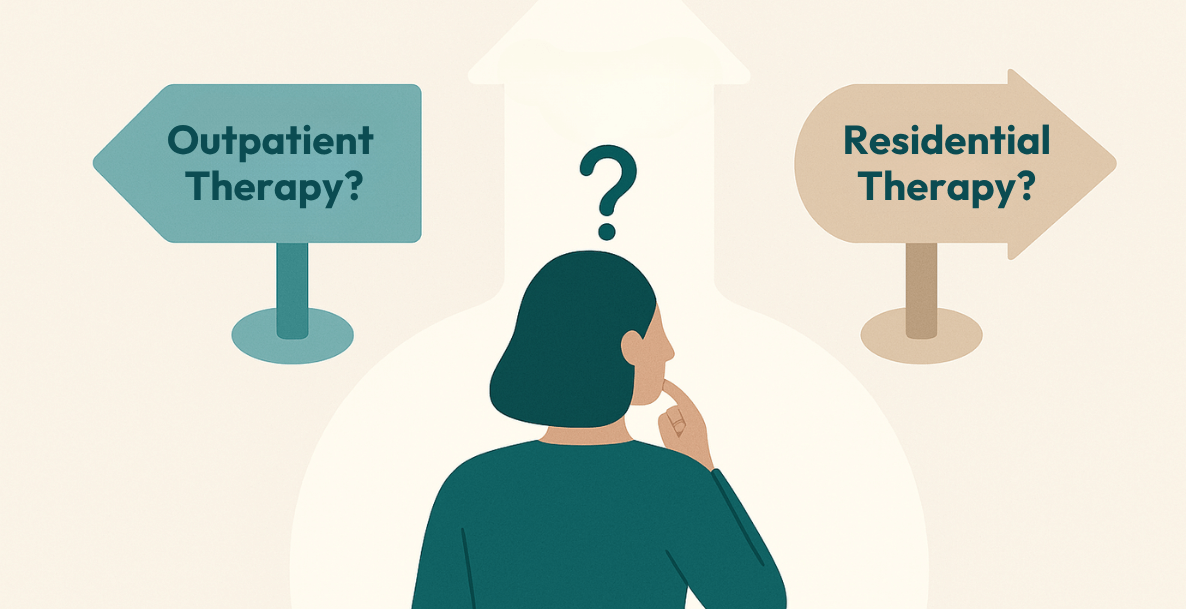Conceived by Dr Stephen Porges, neuroception describes the body scanning our environment for cues of safety or danger. It is constantly ticking below our subconscious, although you are likely to be aware of the physiological responses it causes. They are sent to your brain, which is then tasked with making sense of it; in other words, a story. The problem is that we may be telling ourselves the wrong ones.

Download the Brochure
Discover Our Innovative Trauma Recovery Pathway
Pre-perception
Neuroception is observable in all living species with a nervous system. It precedes the evolution of the cortex. Evolutionary speaking, it lies in our primitive past, the reason autonomic nervous systems responses are more readily identified in animals – less muddied by awareness and perceptions. Dr Stephen Porges explains this is “why a baby coos at a familiar caregiver but cries at the approach of a stranger”, despite the immaturity of the spinal cord and brain[1]. The autonomic nervous system responds through brain structures outside the realm of cognitive awareness, functionally recognizing features of safety or threat before we think.
Whence the signals come
The senses are constantly scanning for cues of safety and danger every microsecond. Based on the signals, neurobiological mechanisms will be triggered spontaneously: either activating a parasympathetic (calming) or sympathetic (arousing) response. Deb Dana identifies the three places we receive signals from[2].
- Outside
The most obvious is perhaps signals from the outside environment. The sight of fire may trigger the sympathetic system; whereas the sound of soothing music may activate a sympathetic response, relaxing tension and informing the mind and body that it is safe.
- Within
The nervous system listens internally for signs of safety or danger, sensing information about your organs. Fever, pain or any physical illness can all cause a shift in our autonomic nervous system.
- Between
These signals come from the interplay between nervous systems (usually humans but also mammals, given the closeness of their system). Evidently, a smiling face is a signal of safety, an angry face one of danger. In turn, they trigger reactions in our own system. When cues of safety are received, it can trigger a neurobiological reaction that transmits a safety signal back.
With mutually reinforcing cues, connection is facilitated. The physiological response is manifested in a variety of ways: facial expressions grow more animated; voice modulation and inflection increases; and ear drums zone into a range that better distinguishes human voices from background din[3]. This is coregulation in action.
Humans are ultimately social beings[4]. Spending time in this ‘between’ social state connection is essential to both our mental and physical health.
Explore Our Treatment Options
Find Out What Makes Us Different
The staff at our globally recognised mental health clinic have been informed, trained and supervised by some of the world’s leading trauma experts such as Dr Bessel van der Kolk, Dr Janina Fisher, Dr Stephen Porges, Dr Dick Schwartz and more.
The Importance of Identifying Triggers
Sometimes we may not recognise the triggers that precede a nervous system response, even when they dramatically change our mood, such as a state shift from connection to fight-or-flight. It’s why many people often confusedly ask themselves “why did I react that way?”. From a place of calm and safety, it may seem irrational. Feelings of shame may also cloud experience, hindering proper reflection. Understanding what is really happening is the springboard for change.
The explanatory power of polyvagal theory lies in its systematisation of the three states – and the shifts between them – based on neurobiological processes[5] that have been essential to evolutionary survival. Shades of shame are alleviated when we understand behaviours as contingent on and constituted by physiological reactions: the ‘how-we-are’. Seen in its proper context, it can help us to forgive ourselves when we have perhaps overreacted.
Awareness must be brought to situations and states. Firstly, merely identifying triggers can help change reactions to them, a practice familiar in approaches like CBT. Understanding why we feel a certain way gives a sense of perspective and lifts confusion. If triggers can be viewed with clarity, the response may change. Just as our neuroception is always listening to our environment, so also should more attention be brought to listening to what the physiological states are trying to tell us and how to form a more enabling story. For instance, anger through the lens of physiology, rather than a seemingly intractable issue of psyche.
Secondly, recognising triggers as they happen enables the use of conscious coping mechanisms. An individual recognising in real-time a trigger they know will cause a sympathetic reaction could immediately ask themselves if they can do anything to provoke a parasympathetic reaction.
Thirdly, if – on reflection – the responses to triggers are not necessarily a result of a mistuned neuroception, it encourages contemplation of whether environments should be changed (whether outside, inside or between). Understanding the biological basis of responses – rather than something inherent in the psyche – can encourage individuals to be bold in changing their lives.
Looking solely at the individual for answers is limiting. Instead they must be seen in context: a collection of experience and memory, much of which is outside conscious availability. Yet that collection is instinctively known by the autonomic nervous system we all share. It is continuously shaping experience on this basis.
New experiences can either reinforce or remould how people respond to stimuli. Understanding must be brought to the autonomic nervous system needs, given its role in all lived experience. It can give us clarity on how to can stay anchored in social connection.
Sources:
[1] Porges, Stephen W.Neuroception: A Subconscious System for Detecting Threats and Safety. Zero to Three (J), v24 n5 p19-24 May 2004
[2] Dana, D. 2018. The Polyvagal Theory in Therapy: Engaging the rhythm of regulation. W W Norton & Co.
[3] Porges, Stephen W.Neuroception: A Subconscious System for Detecting Threats and Safety. Zero to Three (J), v24 n5 p19-24 May 2004
[4] Young SN. The neurobiology of human social behaviour: an important but neglected topic. J Psychiatry Neurosci. 2008;33(5):391‐392.
[5] Porges, S., 2011. The Polyvagal Theory. New York: W.W. Norton.





